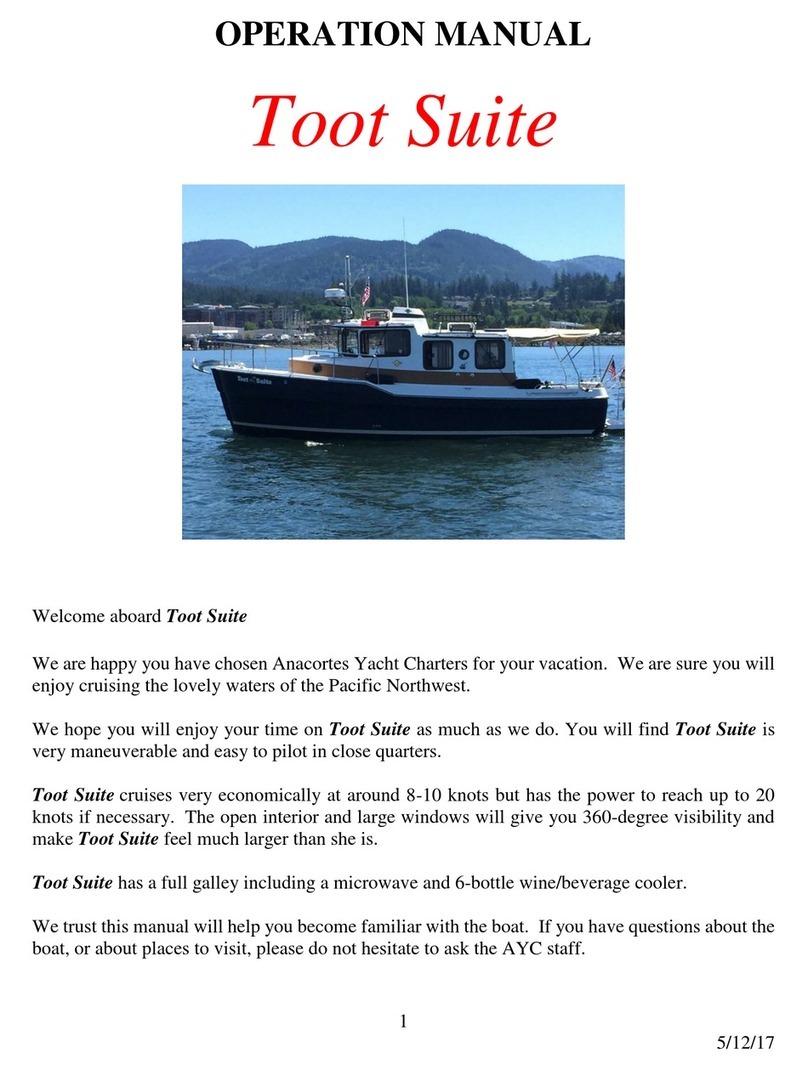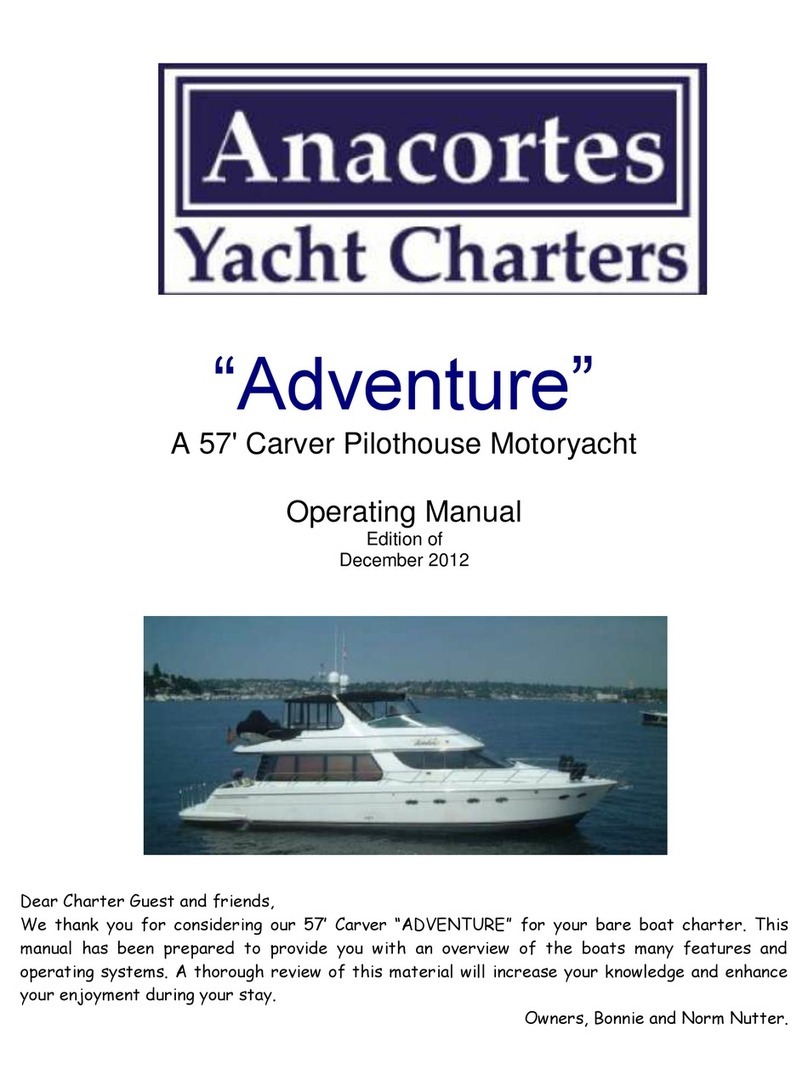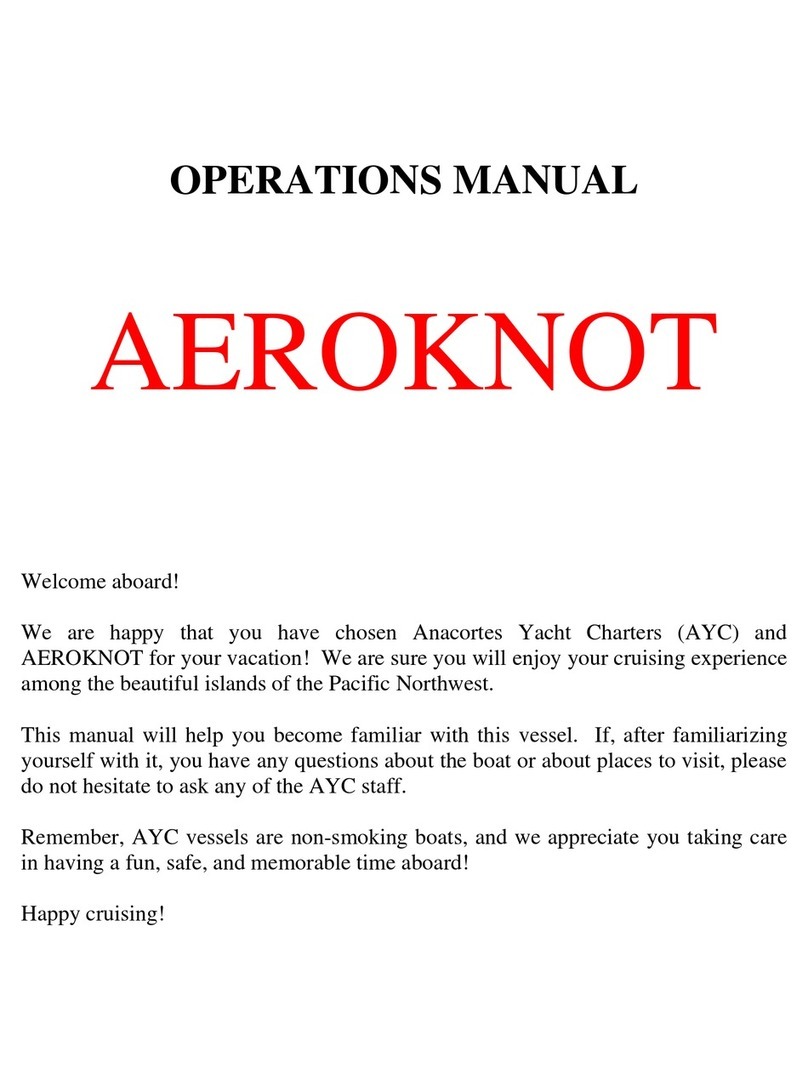
SHORE POWER supports all AC equipment and receptacles on board, as well as the battery chargers.
To connect to shore power, plug the 30amp POWER CORD into the boat and then into the dock
receptacle. Check the power rating/plug size of the nearest dock receptacle (that is 50 amp, 30 amp, 20
amp, or 15 amp). If necessary, add a CORD ADAPTER located under the small step in the V BERTH.
Turn the dock power on. Cords coming off the bow can be wrapped loosely around the bow cleats or
bow rail.
At the ELECTRICAL PANEL, flip the SHORE CIRCUIT BREAKER on. Check for reverse polarity.
Then turn on appropriate breakers for battery charger, refrigeration, water heater, inverter and outlets.
Watch your amp meter for load. If the load exceeds amperage, you will pop your breaker. If this occurs,
turn off some items (e.g. water heater) and wait to turn on one of your systems until your use of electricity
drops.
If your outlets fail to work, check your GFIs to make sure that they have not been tripped. Be aware that
one GFI breaker may supply plug-ins in several areas.
Inverter Power
The INVERTER provides AC power to the 110-volt receptacle plugs (i.e. the microwave oven) when the
boat is disconnected from shore power. The inverter does not provide power to the water heater or the
battery charger. Your inverter panel is located above the door to AFT CABIN with an on/off switch.
Make certain that it is on. The actual inverter is located aft in the engine room.
The inverter’s power source is the DC house or inverter batteries located in the aft cabin starboard quarter
panel behind ladder. The quantity of DC power is limited to the capacity of these batteries. Therefore,
running hair dryers, toaster, coffeepots, space heater, etc. and will quickly discharge the house/inverter
batteries. Use these items VERY SPARINGLY! Monitor your battery usage very carefully! If
anticipated power usage is heavy, start your generator or engines to keep batteries charged.
When connected to shore power, the inverter automatically becomes a battery charger for the 12-volt
HOUSE BATTERIES. Should you detect the inverter failing to charge the house batteries, check the
circuit breaker in the AC Panel and the inverter control panel. Also, there is usually a circuit breaker
located on top of the inverter box.
Generator
To start your GENERATOR, first check that your generator’s fluids are topped off and the raw water
intake is open. The generator controls are located in the panel above the aft cabin door.. First pre-heat
the generator for about 20 seconds. Then while still pre-heating turn the switch to start. Hold the switch
in that position while the generator catches (about 5-10 seconds). Make sure water and exhaust is exiting
out the port stern under the swim platform.
Prior to starting, make sure all individual AC breakers are turned off. After generator is running, turn
your AC distribution switch to generator (or ship). Then turn on AC systems as you would on shore
power one system at a time.
To turn the generator off, first take off the load by turning off AC breakers. Then turn off main AC
distribution switch. Lastly kill the generator by switching generator switch to “off” until it dies.



































